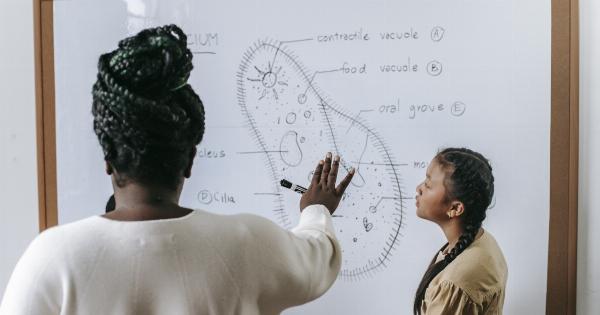Aging is an inevitable process that affects various aspects of our bodies, including our muscles. As we get older, we tend to lose muscle mass and strength, a phenomenon known as age-related muscle loss or sarcopenia.
This decline in muscle can have detrimental effects on our overall health and quality of life. However, recent research has revealed an intriguing secret to combat age-related muscle loss – just six minutes of daily exercise.
In this article, we will explore this secret and uncover the importance of incorporating quick and efficient workouts into our routines as we age.
Understanding Age-Related Muscle Loss
Before diving into the secret to fighting age-related muscle loss, it is crucial to understand why this phenomenon occurs in the first place.
Our muscles are made up of individual muscle fibers, and as we age, these fibers gradually decrease in size and number. This decline, coupled with a decrease in the production of essential hormones like testosterone and growth hormone, leads to muscle wasting.
Moreover, aging also affects our body’s ability to convert protein into muscle mass efficiently. We become less adept at synthesizing protein and more prone to protein breakdown.
This unbalanced protein turnover further contributes to the loss of muscle mass and function.
The Six-Minute Secret
While the idea of combating age-related muscle loss with just six minutes of exercise may sound too good to be true, scientific evidence supports its effectiveness.
A study published in the journal PLOS ONE demonstrated that a high-intensity, six-minute exercise routine performed three times per week significantly improved skeletal muscle health in older adults.
The exercise routine in question is called High-Intensity Interval Training (HIIT). HIIT involves short bursts of intense exercise followed by brief periods of rest.
The key is to push yourself to your limits during the intense bursts, thereby maximizing the benefits of the workout in a short period of time. This type of workout is known to stimulate the production of growth hormone, increase muscle protein synthesis, and enhance overall muscle function.
The Science Behind the Secret
So why does HIIT hold the key to combating age-related muscle loss? The answer lies in the physiological adaptations that occur during and after a HIIT workout.
When we engage in high-intensity exercise, our muscles experience an oxygen debt – a state where they require more oxygen than is available. This oxygen debt triggers a series of metabolic responses that continue even after we finish exercising.
One of the primary responses to this oxygen debt is an increase in growth hormone production. Growth hormone plays a vital role in muscle maintenance, repair, and growth.
By promoting the synthesis of new muscle proteins and inhibiting muscle breakdown, growth hormone helps build and preserve muscle mass, therefore counteracting the effects of age-related muscle loss.
In addition to growth hormone, HIIT also stimulates the activation of satellite cells – cells that reside in our muscles and play a crucial role in muscle regeneration.
These cells become activated in response to exercise and facilitate the repair and growth of muscle fibers.
How to Incorporate HIIT into Your Routine
Now that we understand the science behind HIIT, let’s explore how to incorporate this powerful workout into our daily routines. The beauty of HIIT is that it can be tailored to individual fitness levels and preferences.
Here is a simple six-minute HIIT routine to get you started:.
1. Warm-Up (1 minute):
Start with a light warm-up to prepare your muscles for the upcoming intense workout. This could include brisk walking, light jogging, or jumping jacks.
2. Intense Exercise (20 seconds):
Choose a high-intensity exercise that targets multiple muscle groups simultaneously. Examples include burpees, squat jumps, mountain climbers, or kettlebell swings. Push yourself to your maximum effort during these 20 seconds.
3. Rest (10 seconds):
Allow yourself a brief 10-second rest period before moving on to the next intense exercise. Use this time to catch your breath and prepare mentally for the upcoming burst.
4. Repeat Steps 2 and 3 (5 times):
Perform five sets of intense exercise followed by a 10-second rest. Remember to maintain proper form and technique throughout to minimize the risk of injury.
5. Cool-Down (1 minute):
Finish the six-minute routine with a light cool-down, such as walking or stretching. This will gradually decrease your heart rate and help your muscles recover.
The Long-Term Benefits
Consistency is key when it comes to reaping the long-term benefits of HIIT for age-related muscle loss.
By incorporating this six-minute workout into your daily routine, you can experience significant improvements in muscle mass, strength, and functional fitness over time. Additionally, research has shown that HIIT can also enhance cardiovascular health, metabolic function, and even cognitive performance.
It is important to note that before starting any new exercise regimen, especially if you have pre-existing medical conditions, it is advisable to consult with a healthcare professional or certified trainer.
They can provide personalized guidance and ensure your safety during exercise.
Conclusion
The secret to fighting age-related muscle loss lies within six minutes of high-intensity exercise each day.
By incorporating HIIT into our routines, we can stimulate the production of growth hormone, activate satellite cells, and combat the decline in muscle mass and strength that occurs as we age. This simple yet powerful workout is accessible to individuals of all fitness levels and can have profound effects on overall health and quality of life.
So, lace up your sneakers, set aside six minutes each day, and embrace the secret to defying age-related muscle loss!.




























